SLIDE Rules
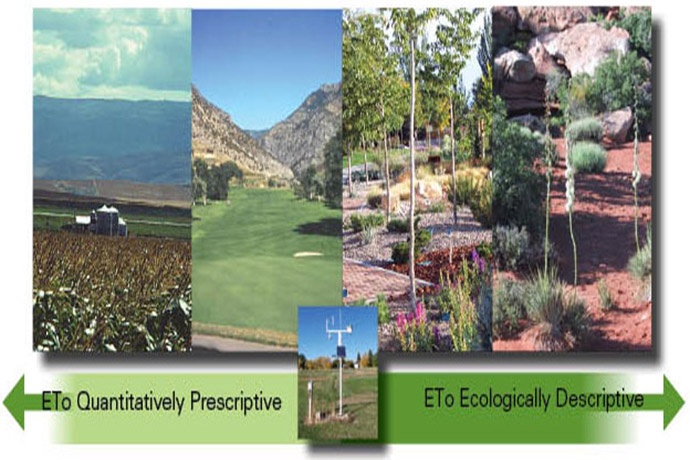
Simplified Landscape Irrigation Demand (SLIDE)
Climate change and drought throughout the country are forcing irrigated urban landscapes to become more thrifty in how they use water. Understanding biophysical water demand is key to thrifty irrigated urban landscapes.
Landscape water demand is the total amount of water a landscape uses from its root zone through soil evaporation and plant transpiration (landscape water use) over a season, punctuated by periodic irrigation to refill the landscape root zone before plant performance, based leaf hardiness to desiccation, degrades from water stress.
Measuring or estimating actual landscape plant water use is the cornerstone, foundation, and scaffolding for designing, regulating and managing water-thrifty urban landscapes.
Currently, actual landscape plant water use is estimated from reference evapotranspiration, ETo. ETo defines water used by a hypothetical turfgrass surface based on solar radiation, air temperature, wind, and humidity for a given time period, then is adjusted downward for specific plant types.
SLIDE Rules (Simplified Landscape Irrigation Demand Estimation) is based on standardized reference evapotranspiration. ETo has many limitations, it is simply measuring atmospheric transpiration and says nothing about how much the plants are actually transpiring. This method works well for the information that we have now, but using satellite information to measure actual evapotranspiration may be more effective.
The Need for SLIDE Rules
Historically, using ETo to estimate actual landscape water use has used a convoluted, contrived, and complex set of adjustment factors untethered from scientific reality.
SLIDE Rules is a new approach to estimating actual landscape evapotranspiration using four rule-of-thumb guidelines:
- describing the limits of using ETo;
- defining simplified adjustment Plant Factors for major plant types—turf, woody plants, desert plants—that reflect physiological distinctions in how each uses water;
- delimiting an 80% density/plant cover threshold above which Plant Factors x ETo determines water use, but below which individual plant size primarily determines water use;
- the smallest landscape size that can be managed for thrifty water use in the hydrozone controlled by one valve, and irrigation frequency and total landscape evapotranspiration is governed by the species with the greatest water demand (highest use, shallowest root zone, least leaf hardiness).
SLIDE rules is a tool that balances simplified, quantitative estimates of landscape water demand, moderated by rule-of-thumb considerations.
SLIDE Rules is a gradient that scales from large, uniform surface to being mostly ecologically descriptive for the biophysically complex mosaic of smaller landscapes with diverse plant forms (trees, shrubs, perennial and annual flowers, turf, groundcovers), micro-climates and spatial arrangements.
SLIDE Rules:
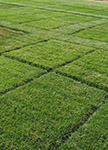
SLIDE Rules # 1: Oasis ETo
Reference evapotranspiration (ETo) measured over a large, uniform urban turf area is that of an oasis and is quantitatively prescriptive and so useful for other uniform turf areas, but is ecologically descriptive and so less useful for non-turf, non-uniform, spatially and biologically diverse landscapes.
ETo of turf oases reasonably represents water demand of landscape turf areas but not the mosaic of non-turf landscape plantings. An ecologically descriptive approach is more suited to estimate the water demand of landscapes comprised of diverse woody and herbaceous species varying in water use characteristics, spatial arrangements and density, and microclimates.
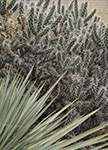
SLIDE Rules# 2: Plant Factor (PF)
Plant Factors (PFs) reasonably adjust ETo to estimate landscape evapotranspiration for general plant types separated by uniformity and response to heat, drought.
Empirical Plant Factors (PF) x ETo estimate evapotranspiration from from general plant types based on their uniformity—turfgrass/annuals versus non turf species—and response to temperature and water stress: C3 versus C4 turf grass species, and non-turf (largely woody) response to dry air (vapor pressure deficit, VPD), and drought, by climate.
Turfgrass PF’s reason-ably represent evapotranspiration of urban turfgrass, so are prescriptively useful in regulation and management. Plants factors for non-turf species become less representative and useful in hotter, drier climates for more drought adapted species.
This standard is currently in the final stages of review by the American Society of Agricultural and Biological Engineers (ASABE), click here for more information about the status of the standard.
Plant Factor (PF) Table
| Plant Type | Recommended Plant Factor (PF) |
|---|---|
| Turf- cool season | 0.8 |
| Turf-warm season | 0.6 |
| Annual Flowers | 0.8 |
| Woody plants and herbaceous perennials (humid) | 0.7 |
| Woody plants and herbaceous perennials (arid) | 0.5 |
| Desert Plants | 0.3 |
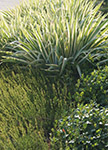
SLIDE Rules # 3: Plant Density
Water demand of dense plant cover of mixed plant types is that of a ‘big leaf’ governed by high PF species; demand of sparse plant cover is that of individual plants governed by leaf area.
Plant canopies covering ≥80% of landscape area use water like a ‘big leaf’ so that water demand is agriculturally prescriptive; water demand of plant canopies covering <80% of landscape areas is a function of the amount of sunlit leaf area and so is ecologically descriptive.
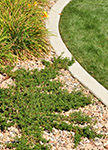
SLIDE Rules # 4: Hydrozones
A landscape zone controlled by one irrigation valve is the smallest water management unit in a landscape; when plant types are mixed in a zone the water demand is governed by the plant type with the highest PF.
An irrigation zone controlled by a single valve is the smallest manageable area of landscape for water application. When a zone is planted with species with the same PF (Slide Rule #2) and similar rooting and leaf desiccation tolerance, it becomes a hydrozone that can be managed for maximum efficiency and water savings. Water management of a zone mixed with species of different plant factors (and rooting and leaf traits) is governed by that species with highest water demand.
Related Publications and Presentations:
- Simplified Landscape Irrigation Demand Estimation (SLIDE) Power Point Presentation September 15, 2015:Intermountain Section of American Water Works
- Simplified Landscape Irrigation Demand Estimation (SLIDE) Power Point Presentation 2015 ASABE Water Use Standards

